But there is a glimpse of the light struck
her face uncommon expression,
Her speeches calm simplicity ... Eugene Baratynsky. Muse. And if so, what is the beauty of it and why people idolize?vessel is where the void, or fire flickering in the vessel? Nicholas Z. Ugly girl Revival of Soviet cinema in the middle - the second half of the 1950s was marked and the birth of many new acting talent. Thing of the past malokartine pozdnestalinskogo beginning of the decade, when all domestic studio, together, produced, at times, less than a dozen films per year, and artistic youth was almost no demand. There was a "thaw", and perhaps never, in such a short time, it was not to shine on our screens this unique artistic constellation. Lovely, bright and inspired faces of the then budding actress remembered instantly, shaking and adoring grateful audience. In 1954-55 he made his debut Zinaida Kiriyenko and Maya Bulgakov, Elena Dobronravova and Lyudmila Kasatkina Elsa Lezhdey and Nina Doroshina, Oia Arepina and Alisa Freundlich and - Isolde Izvitskaya whose main starring role - the legendary Maryutka in "Forty-first," directed by Gregory Chuhraja, gained international fame as early as the 56th. In the same year, the country learned Tatiana Samoilov and Lyudmila Gurchenko Irina Skobtseva and Rufino Nifontova, Svetlana Druzhinin, Liliana Aleshnikova and Raisa Kurkin. A little later - Vey Artmane, Jeanne Bolotovu, Nina Veselovskaya, Lyudmila Khityaeva, Sophia Pavlova Sophiko Chiaureli Ariadne Shengelaja and many more. March 28, 1956, the premiere of one of the most prominent and popular movies of the time - the film adaptation of the novel by Veniamin Kaverin " Two Captains ", created a great director Vladimir Vengerov. And here the main female role also got a great debyutanke - 20-year-old Leningrad ballerina Olga Zabotkin. The fact that it has created in this film, it is best to say the words the author of the book, embedded in the mouth of his hero polar pilot Sani Grigorieva: "Yes, it was my Kate, with her freedom and pride and love perennially must be to the grave, will be turned my head. " He was like a second is modern viewers, visitors online forums of the past two or three years, "the unforgettable image of Katie" Two Captains . " It seemed such an image of the ideal woman, loved, cherished and native. Minimum of text, speaking eyes, fantastic grace. Olga Zabotkina - stunning image: boundless unconcealed love, boundless loyalty. Her Katya Tatarinov - one of the most attractive female images of Soviet cinema. My favorite movie "Two Captains" Olga and Alexander Zabotkina Al.Mikhailov was inimitable, they do not play, and have lived a life of his characters. today already some time watching the film "Two Captains". After seeing this movie for the first time, immediately fell in love with him. Liked it all. And Olga Zabotkina (Katya Tatarinov) ...! That's where the beauty of women! This is not a modern actresses who (though cute) all look the same - without his or her identity. Olga L. accurately embodied on the screen the image Katie, I did exactly this and imagined when reading the book. " By this it is difficult to add something: except that once again recall the extraordinary eyes, expressive look fantastic actress: that angry, scathing in scenes with his stepfather and Romashov, the shining, radiant, as if reigning over her wonderful smile, a lyrical episodes - along with a favorite!Although, strictly speaking, a fictional literary character Katya Tatarinov, at his age, closer to parents' generation Olga Zabotkin, but in their biographies, though, there is something in common and very important: the actress, as well as her character, came from a noble family with naval roots and lived in the besieged Leningrad ... information about the ancestors of Olga Zabotkin - civilian and military officials traced back to the time of Pushkin - 1820. In the nineteenth century. the most prominent member of the genus was the great-grandfather of actress - talented military engineer, Lieutenant-General Dmitry Stepanovich Zabotkin (1834-1894). After a brilliant Nicholas Academy of Engineering, more than a quarter century, he served in the Kronstadt fortress, with half of that time was there the chief of engineering and construction works. They were built fort "Milutin" and battery "Fort Zverev," developed new methods for the time the use of cement and concrete in the construction of a serf. In the early 1890s, has as head of all military engineering service of the Russian Empire, Dmitry Zabotkin engaged in designing fortifications of Sevastopol and Libau. In his obituary noted that as a man, he said: "... it is distinguished by the active kindness. Everyone had access to it, everything is in its chief primarily friendly, relaxing and at the same time quite capable to take any initiative and all responsibility in the unconditional return orders, or in cases requiring solely responsible solutions to confuse the issue. Therefore, relatively recently holding the position of superior engineers, general Zabotkin during this time managed to make a very major reforms in various parts of marching the taking of engineer troops in Russia, and on a technical one. He initiated extensive experiments on the penetration resistance of concrete artillery shells the latest models, and it is extremely vigorously moved the question of the expansion of the Engineering School to a double set, in connection with the restructuring of the old, cramped and uncomfortable space within the walls of this school Mikhailovsky Castle. Unluckily, death interrupted his work in this regard in the heat of the work started. " the share of his sons fell hard time Boxer (Boxer) Rebellion in China, the Russian-Japanese War and World Wars, as well as the revolutions of 1917 and the Civil War. Some joined the Volunteer white, the other - in the Red Army. Later, they waited for an easy life, both in exile and in the USSR. Grandfather actress - Dmitry was born in 1874. Serving as an officer in the Navy as a midshipman began (1894), and 6 years later with the rank of Lieutenant fought in the Far East, commanding a company of airborne sailors from the cruiser 1 rank "Russia". In 1900, his unit helped the British Vice Admiral Edward Seymour fight with the Chinese rebels. In this campaign the young officer distinguished himself and was wounded. At the time of the Russian-Japanese War (1904-1905) commanded one of the first Russian submarine "Field Marshal Earl Sheremet." Probably due to the hereditary qualities, distinguished himself as an inventor and innovator by improving on its submarine torpedo tubes, ensuring thereby the success of their shooting. During the First World War (1915) was promoted to Captain 1st rank "for the differences in fighting the enemy." In 1916, in command of the battleship "Relight". After the revolution - he served in the Soviet Navy. At the end of the Civil War, was the head of the training of the combined schools of the Baltic Fleet. Holguin father - Leonid Dmitrievich (1902-1942) was born in St. Petersburg. At first, he was preparing for a purely military career. Nicholas went to military school and then in the elite Corps des Pages, at the imperial court. To complete the course of training tamoshnego prevented revolution. Subsequently, in accordance with another family tradition, he graduated from the Leningrad Institute of Railway and worked as an engineer in various organizations of Leningrad. In 1934, he married 29-year-old Margarita cervids. Olga's mother came from a family of officials of the Department of General Affairs Ministry of Education, State Councilor Michael L. von Lёvenshterna and his wife Zinaida Petrovna. (Chin grandfather actress for "Table of Ranks" Peter the Great was adequate army Major General or naval Rear Admiral). In 1915, a military background Lёvenshterny for patriotic reasons, changed its name and became the cervids. Under the Soviet regime, Margarita M. graduated from Leningrad bookselling College. January 18, 1936 in the family Zabotkin daughter, Olga.However, her parents' marriage did not last long and broke up in 1940. Leonid D. Before the war he worked in Moscow, where he was sent by the institute "Mekhanobr" to develop his invention. Before the blockade, he returned to Leningrad, since work stopped in Moscow and a year later - died in the besieged city. Olga with her mother, fortunately, survived. During the war and the siege of Leningrad, they lived on the street. Kirochnaya, d. 24. first mother served on the Board of Dzerzhinsky district, and in 1943 moved to Leningrad Museum of Ethnography of the Peoples of the USSR, where she worked for a guide to retirement. Theatre too full; lodges shine; Parterre and chairs - all boils; the district committee eagerly splash, And vzvivshis curtain noise. brilliantly poluvozdushna, magical bow obedient They gather surrounded by nymphs, worth Istomin; it, one foot touching the floor, a slow turning, suddenly leap, and suddenly flies, flies, like down from the mouth of Aeolus; That mill recoil, then develop and quick leg leg effort. Aleksandr Pushkin. Eugene Onegin in 1953 Zabotkina Olga graduated from the Leningrad Choreographic School named after Agrippina Vaganova, where she studied with excellent teachers Hatalii Kamkov and Valentina Ivanova. In the same year she became a soloist of the State Academic Theatre of Opera and Ballet. SM Kirov (now - the Mariinsky), and is also the winner of the IV World Festival of Youth and Students in Bucharest. Position the ballerina was not formed immediately. Olga began life on the stage as a performer of dance parties purely classical plan: danced one of the maids of honor, and then Silver fairy in the ballet "Sleeping Beauty". But from the very first steps of professional actress clearly manifested its interest in the character dances. More on his final performance - Alexander Glazunov's ballet "Raymonda" Zabotkina made in the Spanish dance - panaderose. A performing party Street Dancer in "Don Quixote" by Ludwig Minkus and Persidki in Modest Mussorgsky's opera "Khovanshchina", the artist began to improve rapidly in the field of character dance . Over time, the same panaderos of "Raymonda" became one of its Crown Room, and takes the very "polemical" in spite of the punches, the term for decades. In one of the books of the Leningrad Ballet says about this: "Beautiful Dancer (...), as it is brought on the crest of a wave of dance at the time of their peak. Spaniards freeze spellbound. But, do not even glance in their direction, it enters into a dance with young enthusiasm, self irresistibility of his youth and beauty. She is interested in partners for each other and at the same time slipping away from them, as if waiting for someone else. And here comes the long awaited hero. Her dance is filled with joy, sparks lively fun. Previous inaccessibility gives way to direct the young feeling. " However, a completely different look her Spanish dance in the ballet "Swan Lake" by Pyotr Tchaikovsky and "Laurencia" by Alexander Krein. Zabotkin heroine in "Swan Lake" without a doubt "the Spaniard - it feels a sharply accented and melodious at the same time moving the arms, so characteristic of Spanish dance, a whimsical game fans, by which Spaniards express any feelings - love and hate, contempt and threat. But this is not a simple Spanish woman and a haughty aristocrat. Her movements are executed majesty, each posture, head turning, bending graceful body talk about the proud herd. (...) It is a different character is dance with castanets in the ballet "Laurencia". (...) It's not just folk dance, but an explanation of the two lovers. Do Zabotkin castanets emphasize rhythmic foundation of dance and at the same time, interspersed with his emotional system: amazing combination of rest and rush reverie and mockery. Thin hands with the dancers gracefully elongated fingers fluent castanets, whose language "understood only in love with a Spaniard and saw the sky poet." Dance Zabotkin here is free, cheerful. Her Spaniard - a simple girl dancing in the village square. But how much it natural grace, innate nobility! People's character is revealed in the most charming of its features. Zabotkin attractive heroine of the grace that makes say that "the Spaniard from the womb already goes a dancer." It all seemed riddled with hot rays of the sun, in the splendor of which bloomed this dance with his sultry slow passion, with his enlistment and proud movements of "speaking" hands. " Among her best roles are called the mazurka, and - Gypsy Dance from the ballet by Sergei Prokofiev "Cinderella" and "Stone Flower". In "Cinderella" character Zabotkin - elegant lady in waiting, which is used to "charmed" her grace and elegance.Emphasizing the pretentiousness of the court of the world, like in the mazurka Zabotkina turns into a porcelain figurine. Her dance is completely devoid of enthusiasm, so characteristic of classic Polish mazurka. Mazurka is in "Cinderella" runs on court ball, where everything - from hairstyles to shoes so sophisticated that people lose their full-blooded living features and turn into dolls. A young gypsy from "The Stone Flower" dancing at the fair among the riotous crowd, not because it want it, but by compulsion, for the money. She would rather not tabor girl and dancer from the Gypsy choir that were popular in Russia since the time of Pushkin. In such choirs from generation to generation perfected the art of Gypsy songs and dances. By its nature, dance Zabotkin is close to such dances. She dances like no improvisational dance that is born spontaneously in the eyes of others, and takes the familiar, long familiar to her concert room. Olga Zabotkin more than once and has performed in productions of Russian dance. In the late 1960s, artist sang them Reinhold Gliere's ballet "The Bronze Horseman" and choreographic miniature Igor Stravinsky "Troika." dance that takes Zabotkina in "The Bronze Horseman" breathes udalyo. Dancer given him everything: the enthusiasm in her open smile, in wide-open melodious hands. Traditional handkerchief as a tongue of flame, soared in her hands on a fun crowd. Frenetic whirlwind dancers whirled so that I think she's about to take off from the ground. spirit is sustained in a major and a second executable Zabotkin Russian dance. This kind of "story" about the gay carnival, about Shrovetide fun and pranks. Movements three dancers at the same time express the delight and merry women and zeal dashing horses. They rush into the wind, arms outstretched, with difficulty keeping balance in sharp bends. Zabotkina - central in the top three. She swiftly flies forward, dragging the rest. According to the concept of the choreographer, dancer finely reproduces motifs borrowed from folk art and crafts. Her posture subtly resemble wooden nesting dolls or painted vyatka toy. But most of all look dancers - a person breathes youth and health, a gesture, decorative and monumental poses evoke malyavinskih "Bab." "Having seen the actress in this room, with full confidence we can say: Olga Zabotkina - Russian dancer" - the author writes an essay in the book of the Leningrad Ballet. Fifteen years of work at the Kirov ballerina was performed over 25 and characteristic parts in ballet performances and set dances in operas. She was the first performer of the parties: Colored Girls ("Path of Thunder" Kara Karayev), the Court of dancers ("Legend of Love" Arif Melikov), Mistress of the festival ("In the port entered the" Russia "," Vasily Solovyov-Gray) lezginka ("Mountain Girl "Murad Kazhlaeva). Among the other parties and dances in its repertoire were: Cleopatra ("Egyptian Nights" Anton Arensky), maid restaurant ("Romeo and Juliet" by Sergei Prokofiev), Mercedes and street dancer ("Don Quixote"), Aisha and Gaditanskaya Maid ("Gayane "and" Spartacus "by Aram Khachaturian), Spanish Dance (" The Nutcracker "by Pyotr Tchaikovsky and Bizet's opera" Carmen ") and much more. "Despite the diversity of the repertoire of the actress, her performance is characterized by unity and creative style is traditional, typical of the Leningrad Ballet School . Dance Zabotkin different elegance and grace, clarity, purity plastic figure. Particularly expressive actress in "classical" character dances - Hungarian, Polish and Spanish. She takes them with genuine brilliance, winning refined technique "- wrote baletoved T. Drozd. And it is very symbolic that her second major role in a movie - it is the "Spanish" with a kind of prologue - flashing dance. My love, the color green. Green wind bursts. Faraway sailboat at sea, far horse coppice. At night, in the chest in the fog , she was sitting at a railing - silver frost sight and green hair and body. My love, the color green. gypsy only a month out,the whole world with her eyes does not reduce - and when she sees it. Federico García Lorca. somnambulistic romance Nearly half year after the triumphant premiere of "Two Captains" lenfilmovtsy released a new, this time, the TV picture with Olga Zabotkin the female lead. It was a brilliant film adaptation of the play "Don Cesar de Bazan," delivered once at the Leningrad Drama Theater named Faith Komissarjevskaya on classic French play by Philippe Dyumanua and Adolphe d 'Enneri. Heroine actress - poor street dancer Maritana is subject passion for the Spanish King Charles II. SM
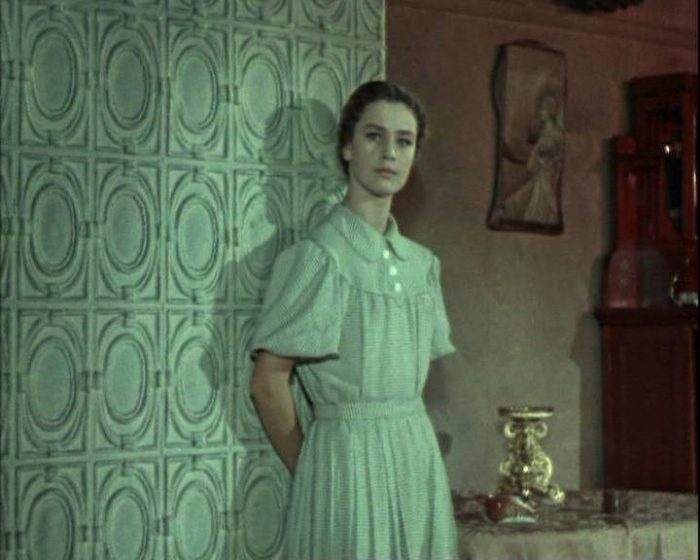
her face uncommon expression,
Her speeches calm simplicity ... Eugene Baratynsky. Muse. And if so, what is the beauty of it and why people idolize?vessel is where the void, or fire flickering in the vessel? Nicholas Z. Ugly girl Revival of Soviet cinema in the middle - the second half of the 1950s was marked and the birth of many new acting talent. Thing of the past malokartine pozdnestalinskogo beginning of the decade, when all domestic studio, together, produced, at times, less than a dozen films per year, and artistic youth was almost no demand. There was a "thaw", and perhaps never, in such a short time, it was not to shine on our screens this unique artistic constellation. Lovely, bright and inspired faces of the then budding actress remembered instantly, shaking and adoring grateful audience. In 1954-55 he made his debut Zinaida Kiriyenko and Maya Bulgakov, Elena Dobronravova and Lyudmila Kasatkina Elsa Lezhdey and Nina Doroshina, Oia Arepina and Alisa Freundlich and - Isolde Izvitskaya whose main starring role - the legendary Maryutka in "Forty-first," directed by Gregory Chuhraja, gained international fame as early as the 56th. In the same year, the country learned Tatiana Samoilov and Lyudmila Gurchenko Irina Skobtseva and Rufino Nifontova, Svetlana Druzhinin, Liliana Aleshnikova and Raisa Kurkin. A little later - Vey Artmane, Jeanne Bolotovu, Nina Veselovskaya, Lyudmila Khityaeva, Sophia Pavlova Sophiko Chiaureli Ariadne Shengelaja and many more. March 28, 1956, the premiere of one of the most prominent and popular movies of the time - the film adaptation of the novel by Veniamin Kaverin " Two Captains ", created a great director Vladimir Vengerov. And here the main female role also got a great debyutanke - 20-year-old Leningrad ballerina Olga Zabotkin. The fact that it has created in this film, it is best to say the words the author of the book, embedded in the mouth of his hero polar pilot Sani Grigorieva: "Yes, it was my Kate, with her freedom and pride and love perennially must be to the grave, will be turned my head. " He was like a second is modern viewers, visitors online forums of the past two or three years, "the unforgettable image of Katie" Two Captains . " It seemed such an image of the ideal woman, loved, cherished and native. Minimum of text, speaking eyes, fantastic grace. Olga Zabotkina - stunning image: boundless unconcealed love, boundless loyalty. Her Katya Tatarinov - one of the most attractive female images of Soviet cinema. My favorite movie "Two Captains" Olga and Alexander Zabotkina Al.Mikhailov was inimitable, they do not play, and have lived a life of his characters. today already some time watching the film "Two Captains". After seeing this movie for the first time, immediately fell in love with him. Liked it all. And Olga Zabotkina (Katya Tatarinov) ...! That's where the beauty of women! This is not a modern actresses who (though cute) all look the same - without his or her identity. Olga L. accurately embodied on the screen the image Katie, I did exactly this and imagined when reading the book. " By this it is difficult to add something: except that once again recall the extraordinary eyes, expressive look fantastic actress: that angry, scathing in scenes with his stepfather and Romashov, the shining, radiant, as if reigning over her wonderful smile, a lyrical episodes - along with a favorite!Although, strictly speaking, a fictional literary character Katya Tatarinov, at his age, closer to parents' generation Olga Zabotkin, but in their biographies, though, there is something in common and very important: the actress, as well as her character, came from a noble family with naval roots and lived in the besieged Leningrad ... information about the ancestors of Olga Zabotkin - civilian and military officials traced back to the time of Pushkin - 1820. In the nineteenth century. the most prominent member of the genus was the great-grandfather of actress - talented military engineer, Lieutenant-General Dmitry Stepanovich Zabotkin (1834-1894). After a brilliant Nicholas Academy of Engineering, more than a quarter century, he served in the Kronstadt fortress, with half of that time was there the chief of engineering and construction works. They were built fort "Milutin" and battery "Fort Zverev," developed new methods for the time the use of cement and concrete in the construction of a serf. In the early 1890s, has as head of all military engineering service of the Russian Empire, Dmitry Zabotkin engaged in designing fortifications of Sevastopol and Libau. In his obituary noted that as a man, he said: "... it is distinguished by the active kindness. Everyone had access to it, everything is in its chief primarily friendly, relaxing and at the same time quite capable to take any initiative and all responsibility in the unconditional return orders, or in cases requiring solely responsible solutions to confuse the issue. Therefore, relatively recently holding the position of superior engineers, general Zabotkin during this time managed to make a very major reforms in various parts of marching the taking of engineer troops in Russia, and on a technical one. He initiated extensive experiments on the penetration resistance of concrete artillery shells the latest models, and it is extremely vigorously moved the question of the expansion of the Engineering School to a double set, in connection with the restructuring of the old, cramped and uncomfortable space within the walls of this school Mikhailovsky Castle. Unluckily, death interrupted his work in this regard in the heat of the work started. " the share of his sons fell hard time Boxer (Boxer) Rebellion in China, the Russian-Japanese War and World Wars, as well as the revolutions of 1917 and the Civil War. Some joined the Volunteer white, the other - in the Red Army. Later, they waited for an easy life, both in exile and in the USSR. Grandfather actress - Dmitry was born in 1874. Serving as an officer in the Navy as a midshipman began (1894), and 6 years later with the rank of Lieutenant fought in the Far East, commanding a company of airborne sailors from the cruiser 1 rank "Russia". In 1900, his unit helped the British Vice Admiral Edward Seymour fight with the Chinese rebels. In this campaign the young officer distinguished himself and was wounded. At the time of the Russian-Japanese War (1904-1905) commanded one of the first Russian submarine "Field Marshal Earl Sheremet." Probably due to the hereditary qualities, distinguished himself as an inventor and innovator by improving on its submarine torpedo tubes, ensuring thereby the success of their shooting. During the First World War (1915) was promoted to Captain 1st rank "for the differences in fighting the enemy." In 1916, in command of the battleship "Relight". After the revolution - he served in the Soviet Navy. At the end of the Civil War, was the head of the training of the combined schools of the Baltic Fleet. Holguin father - Leonid Dmitrievich (1902-1942) was born in St. Petersburg. At first, he was preparing for a purely military career. Nicholas went to military school and then in the elite Corps des Pages, at the imperial court. To complete the course of training tamoshnego prevented revolution. Subsequently, in accordance with another family tradition, he graduated from the Leningrad Institute of Railway and worked as an engineer in various organizations of Leningrad. In 1934, he married 29-year-old Margarita cervids. Olga's mother came from a family of officials of the Department of General Affairs Ministry of Education, State Councilor Michael L. von Lёvenshterna and his wife Zinaida Petrovna. (Chin grandfather actress for "Table of Ranks" Peter the Great was adequate army Major General or naval Rear Admiral). In 1915, a military background Lёvenshterny for patriotic reasons, changed its name and became the cervids. Under the Soviet regime, Margarita M. graduated from Leningrad bookselling College. January 18, 1936 in the family Zabotkin daughter, Olga.However, her parents' marriage did not last long and broke up in 1940. Leonid D. Before the war he worked in Moscow, where he was sent by the institute "Mekhanobr" to develop his invention. Before the blockade, he returned to Leningrad, since work stopped in Moscow and a year later - died in the besieged city. Olga with her mother, fortunately, survived. During the war and the siege of Leningrad, they lived on the street. Kirochnaya, d. 24. first mother served on the Board of Dzerzhinsky district, and in 1943 moved to Leningrad Museum of Ethnography of the Peoples of the USSR, where she worked for a guide to retirement. Theatre too full; lodges shine; Parterre and chairs - all boils; the district committee eagerly splash, And vzvivshis curtain noise. brilliantly poluvozdushna, magical bow obedient They gather surrounded by nymphs, worth Istomin; it, one foot touching the floor, a slow turning, suddenly leap, and suddenly flies, flies, like down from the mouth of Aeolus; That mill recoil, then develop and quick leg leg effort. Aleksandr Pushkin. Eugene Onegin in 1953 Zabotkina Olga graduated from the Leningrad Choreographic School named after Agrippina Vaganova, where she studied with excellent teachers Hatalii Kamkov and Valentina Ivanova. In the same year she became a soloist of the State Academic Theatre of Opera and Ballet. SM Kirov (now - the Mariinsky), and is also the winner of the IV World Festival of Youth and Students in Bucharest. Position the ballerina was not formed immediately. Olga began life on the stage as a performer of dance parties purely classical plan: danced one of the maids of honor, and then Silver fairy in the ballet "Sleeping Beauty". But from the very first steps of professional actress clearly manifested its interest in the character dances. More on his final performance - Alexander Glazunov's ballet "Raymonda" Zabotkina made in the Spanish dance - panaderose. A performing party Street Dancer in "Don Quixote" by Ludwig Minkus and Persidki in Modest Mussorgsky's opera "Khovanshchina", the artist began to improve rapidly in the field of character dance . Over time, the same panaderos of "Raymonda" became one of its Crown Room, and takes the very "polemical" in spite of the punches, the term for decades. In one of the books of the Leningrad Ballet says about this: "Beautiful Dancer (...), as it is brought on the crest of a wave of dance at the time of their peak. Spaniards freeze spellbound. But, do not even glance in their direction, it enters into a dance with young enthusiasm, self irresistibility of his youth and beauty. She is interested in partners for each other and at the same time slipping away from them, as if waiting for someone else. And here comes the long awaited hero. Her dance is filled with joy, sparks lively fun. Previous inaccessibility gives way to direct the young feeling. " However, a completely different look her Spanish dance in the ballet "Swan Lake" by Pyotr Tchaikovsky and "Laurencia" by Alexander Krein. Zabotkin heroine in "Swan Lake" without a doubt "the Spaniard - it feels a sharply accented and melodious at the same time moving the arms, so characteristic of Spanish dance, a whimsical game fans, by which Spaniards express any feelings - love and hate, contempt and threat. But this is not a simple Spanish woman and a haughty aristocrat. Her movements are executed majesty, each posture, head turning, bending graceful body talk about the proud herd. (...) It is a different character is dance with castanets in the ballet "Laurencia". (...) It's not just folk dance, but an explanation of the two lovers. Do Zabotkin castanets emphasize rhythmic foundation of dance and at the same time, interspersed with his emotional system: amazing combination of rest and rush reverie and mockery. Thin hands with the dancers gracefully elongated fingers fluent castanets, whose language "understood only in love with a Spaniard and saw the sky poet." Dance Zabotkin here is free, cheerful. Her Spaniard - a simple girl dancing in the village square. But how much it natural grace, innate nobility! People's character is revealed in the most charming of its features. Zabotkin attractive heroine of the grace that makes say that "the Spaniard from the womb already goes a dancer." It all seemed riddled with hot rays of the sun, in the splendor of which bloomed this dance with his sultry slow passion, with his enlistment and proud movements of "speaking" hands. " Among her best roles are called the mazurka, and - Gypsy Dance from the ballet by Sergei Prokofiev "Cinderella" and "Stone Flower". In "Cinderella" character Zabotkin - elegant lady in waiting, which is used to "charmed" her grace and elegance.Emphasizing the pretentiousness of the court of the world, like in the mazurka Zabotkina turns into a porcelain figurine. Her dance is completely devoid of enthusiasm, so characteristic of classic Polish mazurka. Mazurka is in "Cinderella" runs on court ball, where everything - from hairstyles to shoes so sophisticated that people lose their full-blooded living features and turn into dolls. A young gypsy from "The Stone Flower" dancing at the fair among the riotous crowd, not because it want it, but by compulsion, for the money. She would rather not tabor girl and dancer from the Gypsy choir that were popular in Russia since the time of Pushkin. In such choirs from generation to generation perfected the art of Gypsy songs and dances. By its nature, dance Zabotkin is close to such dances. She dances like no improvisational dance that is born spontaneously in the eyes of others, and takes the familiar, long familiar to her concert room. Olga Zabotkin more than once and has performed in productions of Russian dance. In the late 1960s, artist sang them Reinhold Gliere's ballet "The Bronze Horseman" and choreographic miniature Igor Stravinsky "Troika." dance that takes Zabotkina in "The Bronze Horseman" breathes udalyo. Dancer given him everything: the enthusiasm in her open smile, in wide-open melodious hands. Traditional handkerchief as a tongue of flame, soared in her hands on a fun crowd. Frenetic whirlwind dancers whirled so that I think she's about to take off from the ground. spirit is sustained in a major and a second executable Zabotkin Russian dance. This kind of "story" about the gay carnival, about Shrovetide fun and pranks. Movements three dancers at the same time express the delight and merry women and zeal dashing horses. They rush into the wind, arms outstretched, with difficulty keeping balance in sharp bends. Zabotkina - central in the top three. She swiftly flies forward, dragging the rest. According to the concept of the choreographer, dancer finely reproduces motifs borrowed from folk art and crafts. Her posture subtly resemble wooden nesting dolls or painted vyatka toy. But most of all look dancers - a person breathes youth and health, a gesture, decorative and monumental poses evoke malyavinskih "Bab." "Having seen the actress in this room, with full confidence we can say: Olga Zabotkina - Russian dancer" - the author writes an essay in the book of the Leningrad Ballet. Fifteen years of work at the Kirov ballerina was performed over 25 and characteristic parts in ballet performances and set dances in operas. She was the first performer of the parties: Colored Girls ("Path of Thunder" Kara Karayev), the Court of dancers ("Legend of Love" Arif Melikov), Mistress of the festival ("In the port entered the" Russia "," Vasily Solovyov-Gray) lezginka ("Mountain Girl "Murad Kazhlaeva). Among the other parties and dances in its repertoire were: Cleopatra ("Egyptian Nights" Anton Arensky), maid restaurant ("Romeo and Juliet" by Sergei Prokofiev), Mercedes and street dancer ("Don Quixote"), Aisha and Gaditanskaya Maid ("Gayane "and" Spartacus "by Aram Khachaturian), Spanish Dance (" The Nutcracker "by Pyotr Tchaikovsky and Bizet's opera" Carmen ") and much more. "Despite the diversity of the repertoire of the actress, her performance is characterized by unity and creative style is traditional, typical of the Leningrad Ballet School . Dance Zabotkin different elegance and grace, clarity, purity plastic figure. Particularly expressive actress in "classical" character dances - Hungarian, Polish and Spanish. She takes them with genuine brilliance, winning refined technique "- wrote baletoved T. Drozd. And it is very symbolic that her second major role in a movie - it is the "Spanish" with a kind of prologue - flashing dance. My love, the color green. Green wind bursts. Faraway sailboat at sea, far horse coppice. At night, in the chest in the fog , she was sitting at a railing - silver frost sight and green hair and body. My love, the color green. gypsy only a month out,the whole world with her eyes does not reduce - and when she sees it. Federico García Lorca. somnambulistic romance Nearly half year after the triumphant premiere of "Two Captains" lenfilmovtsy released a new, this time, the TV picture with Olga Zabotkin the female lead. It was a brilliant film adaptation of the play "Don Cesar de Bazan," delivered once at the Leningrad Drama Theater named Faith Komissarjevskaya on classic French play by Philippe Dyumanua and Adolphe d 'Enneri. Heroine actress - poor street dancer Maritana is subject passion for the Spanish King Charles II. SM


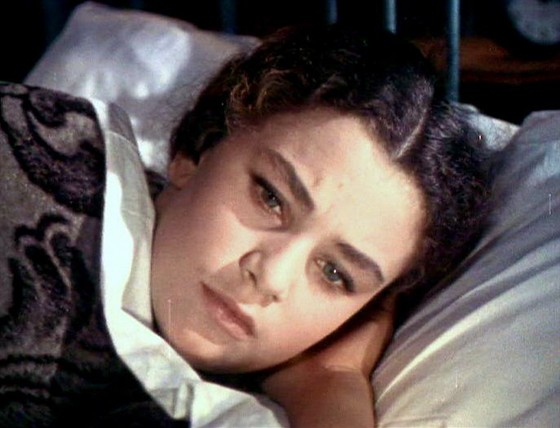

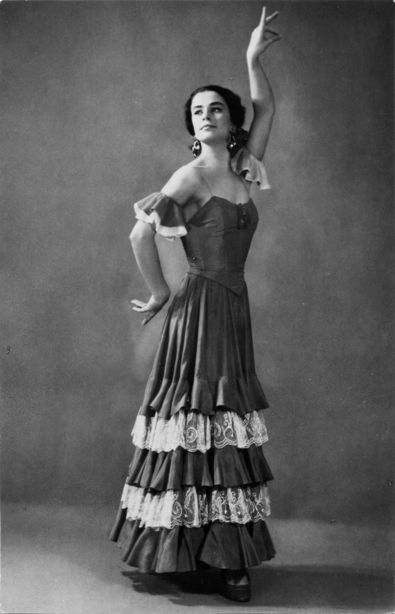

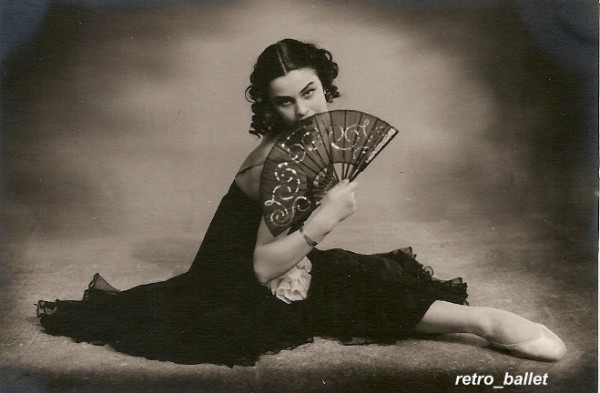
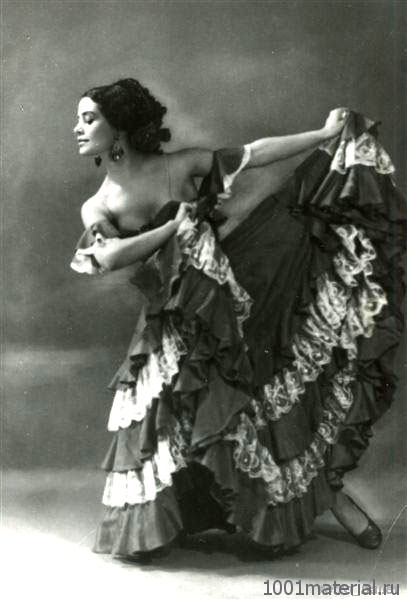
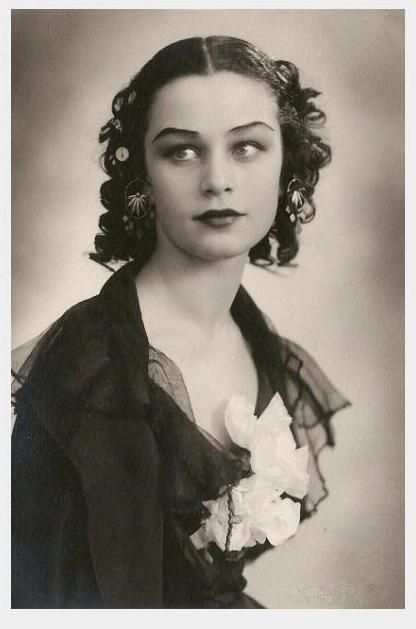
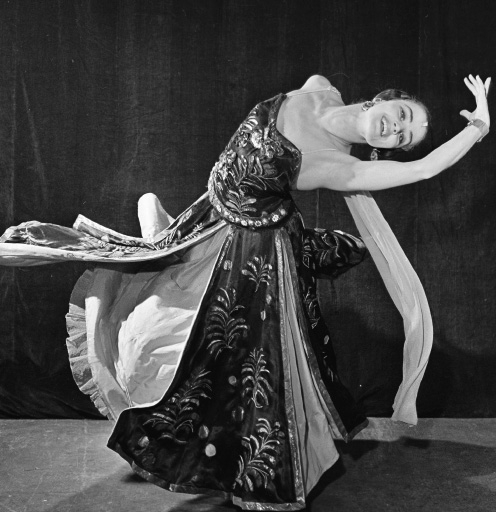
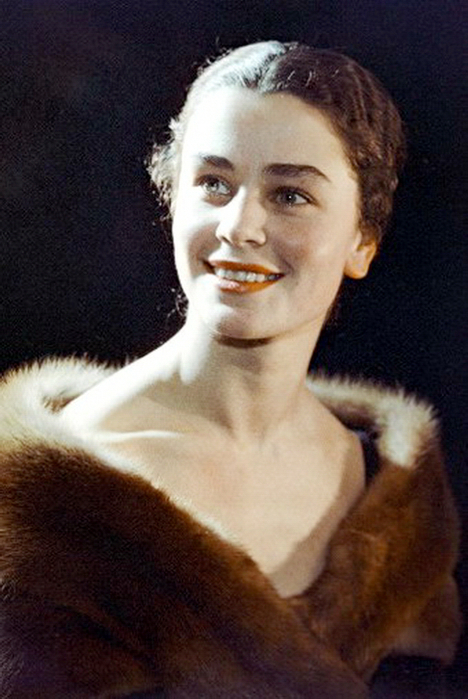
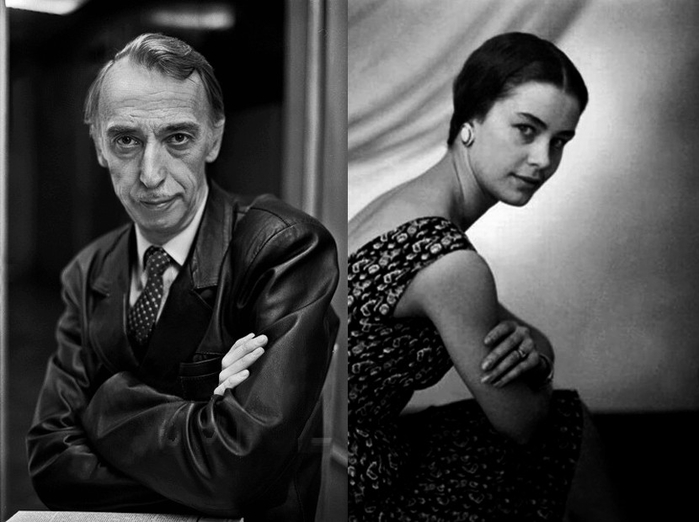

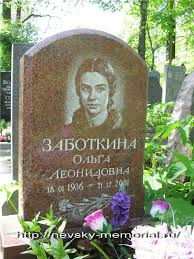

No comments:
Post a Comment